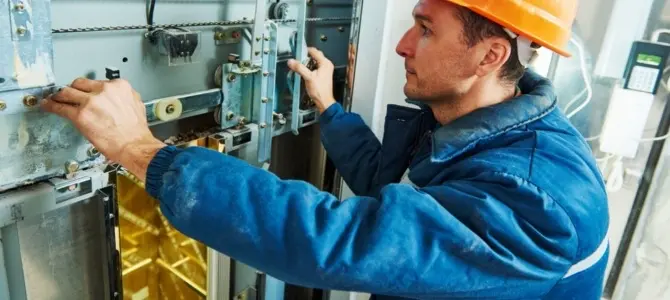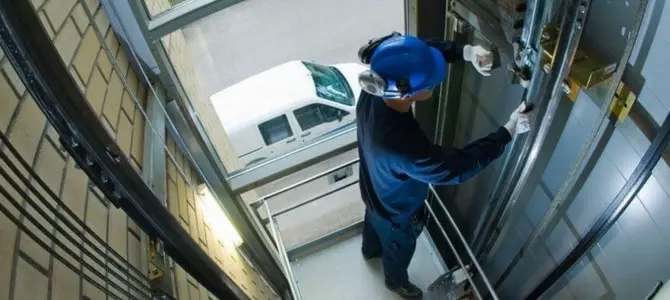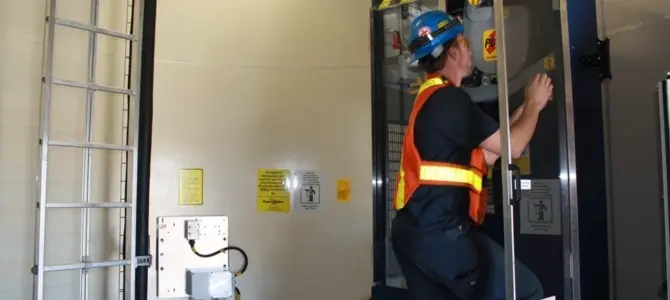Does your elevator feel outdated, sluggish, or even unsafe? You’re not alone. Many building owners and managers face the same dilemma as elevators age and fail to meet modern standards. These issues can result in high maintenance costs, unhappy tenants, and even compliance risks. So, what’s the solution? Elevator modernization.
Elevator modernization is the process of upgrading key components to improve safety, efficiency, and user experience. By addressing worn-out parts and integrating modern technologies, you can extend your elevator’s lifespan, reduce costs, and enhance overall performance. In this guide, I’ll explain everything you need to know about elevator modernization, including the process, benefits, and what to consider before getting started.
Elevators are built to last 20–30 years, but their components don’t remain effective forever. Over time, wear and tear take their toll, and technological advancements render older systems obsolete.
Here are some common indicators that your elevator may need modernization:
Elevators with aging components often experience malfunctions that result in costly repair bills and tenant frustration.
Older elevators tend to use outdated motors and control systems that consume excessive power, leading to higher utility bills.
An outdated elevator may not comply with current safety codes, increasing the risk of accidents and liability issues.
Sluggish operation or uneven leveling indicates that critical components like motors or control systems are failing.
A worn-out cabin with dim lighting, scratched panels, or noisy doors can harm your building’s reputation.
Learn more about identifying signs of elevator modernization needs.
Elevator modernization, also known as “lift upgrading,” involves replacing or upgrading specific components to enhance the elevator’s performance, safety, and appearance. It addresses both mechanical and electrical systems while ensuring compliance with modern building codes.
Key components that are often upgraded include:
Modernization extends the elevator’s lifespan and provides a better experience for users while reducing maintenance headaches.
Explore elevator modernization components and their functions.

Modernizing an elevator brings several advantages for building owners, tenants, and operators:
Modernization upgrades your system to meet the latest safety standards, reducing the risk of accidents and liability.
Replacing older components with energy-efficient motors, LED lighting, and modern controllers can cut energy consumption by up to 40%.
Updated systems are more reliable and require fewer repairs, saving you money in the long term.
Modern motors and control systems eliminate jerky movements and loud noises, providing a smoother ride.
A refreshed cabin with sleek panels and modern lighting improves tenant satisfaction and boosts your building’s image.

Modernizing an elevator involves multiple steps, each designed to ensure a smooth upgrade:
Step 1: Initial Assessment
Conduct a thorough inspection of your elevator system to identify which components need upgrading. Common problem areas include:
Schedule a professional elevator assessment.
Step 2: Planning and Budgeting
Define your goals for the modernization project. Whether you aim to improve safety, boost energy efficiency, or enhance aesthetics, having clear objectives will guide the process.
Work with a trusted supplier to determine costs and timelines. Prioritize upgrades that offer the highest return on investment.
Step 3: Component Selection
Choose the right components based on your modernization goals. Key options include:
Browse high-quality elevator modernization components.
Step 4: Installation and Testing
Once planning is complete, the actual modernization process begins:
Step 5: Certification and Handover
After installation, the upgraded elevator must pass inspection and certification to confirm compliance with local regulations. Only then is it handed over for regular use.

Modernization projects can target specific areas of an elevator system based on your needs:
This involves upgrading outdated wiring, relays, and sensors to improve system reliability and safety.
Advanced control systems enhance operational efficiency, reliability, and energy usage.
Install features like emergency brakes, advanced light curtains, and seismic sensors to improve passenger safety.
Update cabin interiors with new materials, LED lighting, and touchless panels for a modern look.

The cost of modernization depends on several factors:
Request a customized quote for your elevator modernization project.
Most elevators need modernization every 20–30 years, or sooner if they show signs of aging.
The timeline varies depending on the scope but typically ranges from a few weeks to a few months.
Disruptions can be minimized by scheduling work during off-peak hours and notifying tenants in advance.
Costs range from $40,000 to $150,000, depending on the components being upgraded.
Elevator modernization is an essential investment in safety, performance, and efficiency. By upgrading outdated systems, you can enhance tenant satisfaction, reduce maintenance costs, and ensure your building remains competitive in today’s market.
At Potensi, we provide top-quality elevator components and expert guidance to support your modernization projects. Contact us today to start upgrading your elevator system for the future.
① Get 10% off on your first order.
② Get latest news about our promotion products.
③ Get our sales specialist VIP service 24/7.
④ Get access to our credit payment time.
WhatsApp us
